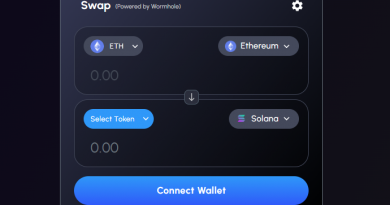Polkadot: A blockchain platform for interoperability
Polkadot: A blockchain platform for the interoperability and scalability of the future
Blockchain technology has made tremendous progress in recent years, spawning a wide range of applications and projects. One of the most promising projects in this field is Polkadot, an innovative blockchain platform that aims to improve interoperability and scalability between different blockchains. Polkadot was launched by Dr. Gavin Wood, one of the co-founders of Ethereum, and has received significant attention and recognition since its launch in 2020.
What is polkadot?
Polkadot is a blockchain platform that is referred to as a "blockchain for blockchains". The main goal of Polkadot is to overcome fragmentation and isolation between different blockchains by enabling them to communicate and share data with each other. The project was developed by Parity Technologies and is designed as an open-source platform that is operated and developed by the community.
A core concept of Polkadot is the so-called "relay chain". This is Polkadot's main chain that serves as a hub for communication and interaction with other blockchains. Rather than bundling all data and transactions into a single blockchain, Polkadot allows for the simultaneous existence of multiple specialized blockchains called "parachains." These parachains can have specific applications or functions and can be interconnected through the relay chain to exchange and communicate data.
Advantages of Polkadot:
Polkadot offers a number of advantages that make it a promising and unique blockchain platform:
1. interoperability: one of the most important features of Polkadot is its ability to allow different blockchains to connect and communicate with each other. Through the use of parachains and the relay chain, specialized blockchains can seamlessly collaborate and share data. This enables increased collaboration and interaction between different blockchains and promotes the creation of a comprehensive ecosystem.
2. scalability: Polkadot is designed to solve scalability issues that affect many blockchain networks. By using parachains, transactions can be processed in parallel and simultaneously, increasing the overall capacity of the network and enabling a higher number of transactions per second.
3. security: Polkadot uses an innovative consensus mechanism design called Nominated Proof-of-Stake (NPoS). This mechanism allows token holders, called nominators, to select validator candidates to validate blocks. This strengthens the security of the network as nominators have incentives to select responsible and reliable validator candidates.
4. governance: Polkadot has a democratic governance model that is controlled by the token holders. Everyone holding DOT tokens can participate in the decision making and development of the platform by voting on changes and upgrades. This promotes decentralized and transparent decision making within the community.
5. upgradeability: Polkadot is designed from the ground up to be easily extensible and upgradeable. New features and protocols can be implemented by adding new Parachains without affecting the entire network. This allows Polkadot to continuously evolve and adapt to new requirements and technologies.
6. enables innovation: Polkadot provides developers with a flexible and powerful platform to create new decentralized applications (DApps) and blockchain protocols. Interoperability and scalability enable developers to bring their ideas to life in a diverse and collaborative ecosystem and create more innovative solutions.
Overall, Polkadot offers a promising infrastructure for the advancement and integration of blockchain technologies. With its ability to interoperate and scale, it has the potential to fundamentally change the way blockchain networks interact and collaborate. With an active community and continued technological developments, Polkadot remains a significant force in the blockchain world and a key player in the future of decentralized applications.





